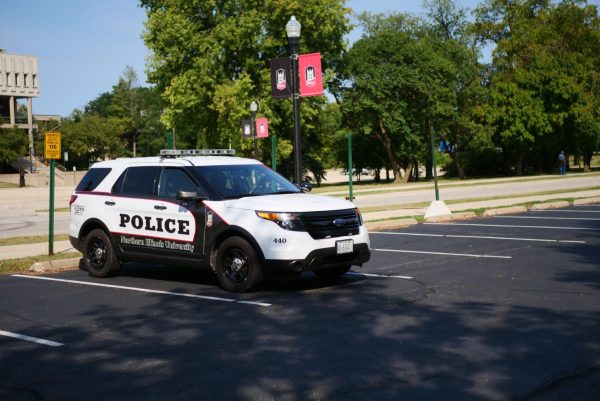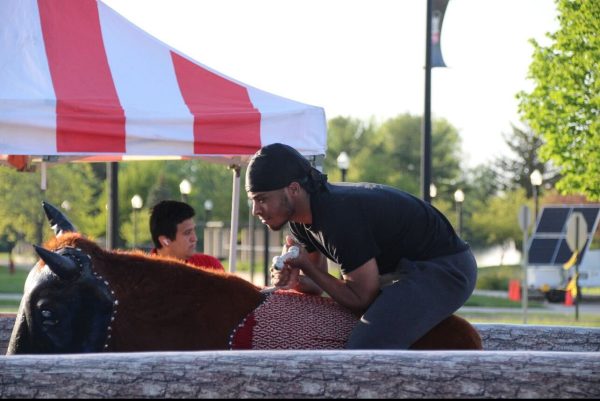Affirmative action seeks final decision
January 14, 2003
The Supreme Court is expected to hear a case this year that could affect the way public universities and colleges across the nation use race as a factor in their admissions.
The court will make the decision on Grutter v. Bollinger, which challenges the affirmative action policies of the University of Michigan’s College of Law.
Barbara Grutter, along with about 100 other plaintiffs, sued the university in 1997 after she was denied entry into the College of Law. She alleged that she was a well-qualified applicant and claimed equal protection. The case was heard in 2001 in circuit courts. The Supreme Court decided to hear the case in December 2002.
The court will look at briefs opposing affirmative action by Jan. 16 and briefs supporting the Michigan admissions policies in February.
This could be the biggest decision on segregation the Supreme Court has made in generations.
The last ruling the Supreme Court made on race in higher education was Bocky v. California Regents in 1978. The ruling said race could be used as a factor in admissions, a vague decision leaving it up to colleges and universities to set their own policies on regarding race in admissions.
Within the last few years, four states have ruled that race can’t be used as basis in higher education. Among them were California, Florida, Texas and Washington.
The Texas case federal circuit found race couldn’t be the basis of affirmative action. The open question, said LeRoy Pernell, dean of the College of Law, is that some have looked at a substitute such as economics or geographic regions as a basis for affirmative action.
Pernell said the current decision in Michigan in the 6th circuit is directly opposite to the 5th circuit in Texas. The two cases are in conflict with each, which is why one of the main reasons the supreme court decided to hear the case.
The expected ruling from the Supreme Court is up in the air.
Given historical opinions that different justices expressed, it would suggest that there probably would be a split, Pernell said.
The tension here is between this case[Grutter v. Bollinger] and the Bocky case because there was no majority decision in Bocky, he added. The court would have to be more specific.
Sylvia Fuentes, Director of University Resources for Latinos, is familiar with the case and is concerned about the increasing admissions of Latino students.
She said their numbers are at a mute point for a time because of the state budget. Latino numbers are low across the nation. About 1,100 Latino students attend NIU, but Latinos are the youngest minority group in higher education, and the average medium is still young. Fuentes said people like herself need to be concerned about their education.
LaVerne Gyant, the director of the Center for Black Studies, hopes NIU affirmative action policies remain the same.
“NIU has protected itself a lot in regards to admission policies,” she said. “I think NIU will be OK.”
Gyant said the issue is not to get rid of affirmative action, but to revamp it.
“People of color have been denied their rights for so long, and affirmative action came about in the civil rights movement,” she said. “If people have the grades and test scores, they should just be let in.”
The plaintiffs are saying that this is discrimination, but when you look at the overall admissions nationally and minority population versus faculty, people don’t complain about that very much.The status quo is still in place, and most people don’t seem to be concerned about it, Fuentes said.
Gyant also pointed out that there were no complaints when the majority was accepted to Historically Black Colleges and Universities.
In 2000, 41 student intervenors consisting of minorities, the Coalition to Defend Affirmative Action & Integration and Fight for Equality By Any Means Necessary, or BAMN, United for Equality and Affirmative Action, or UEAA, and Law Students for Affirmative Action, stepped in the case providing experts on standardized testing, researchers and minority students with personal stories of felt racial tension and experiences at inner-city high schools.
Winnie Kao, an intervenor in the case and organizer for BAMN who also is a U of M law alumna, is organizing a six-day summit on Jan. 20-26 in Ann Arbor, Michigan.
“They are demanding a decision that is relevant that is going to actually reflect the reality of this society,” Kao said. “The reality of the continuing current present and current racial segregation and racial inequality.”
Kao said Linda Brown of Brown v Board of Education, Peter Irons, author “Gary Orfield,” the leading scholar on K-12 desegregation and Al Sharpton are expected to attend the six-day summit, which consists of workshops and panel discussions. BAMN also is organizing a march in Washington D.C. slated for March of this year.
“This is our Brown vs Board of Education,” Kao said.













